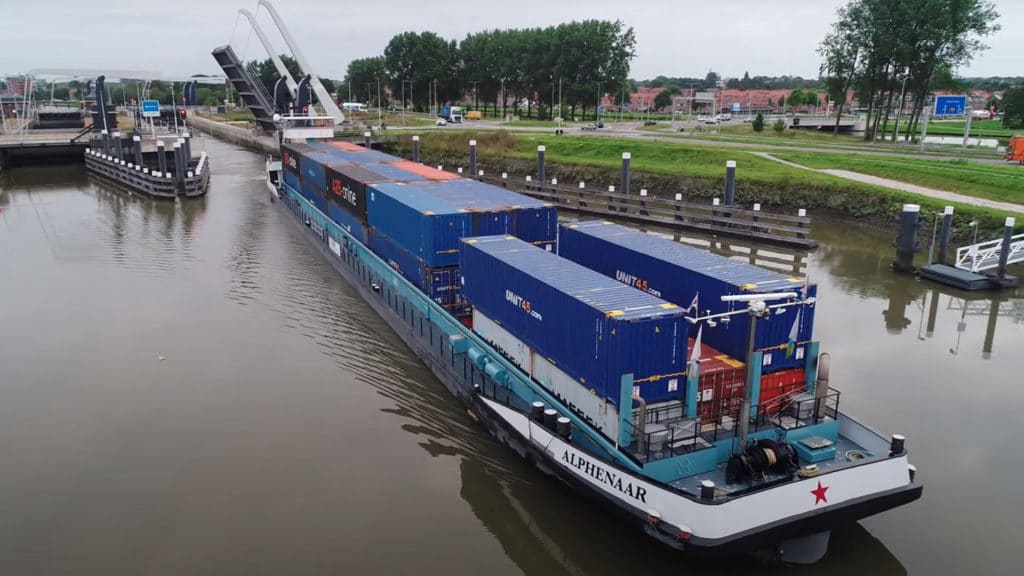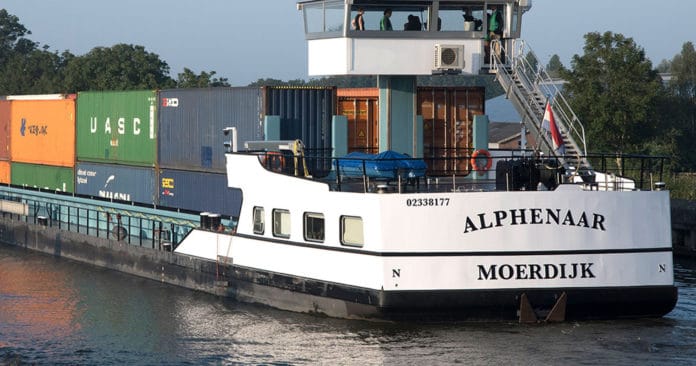Around 80% of the volume of international trade in goods is carried by sea, and the percentage is even higher for most developing countries. The cargo ships that transport these goods are a massive source of pollution, and we have seen some interesting ideas to reduce their emissions, such as massive sails and hydrogen powertrains.
Now, a Netherlands-based company, Zero Emission Services (ZES), has put the Alphenaar, the first Dutch inland ship, into operation that uses interchangeable energy containers as batteries. The Alphenaar sails between Alphen aan den Rijn and Moerdijk transporting beer for HEINEKEN, ZES’s first end customer.
Alphenaar uses ‘ZESpacks’ energy containers are standard 20ft containers filled with batteries charged with green electricity. ZESpacks currently in use work with lithium-ion batteries, but this could also be hydrogen, ammonia, or something else in the future. The ZESpack always fits on the connection, regardless of the type of energy in the container.

Wärtsilä – supplier of the first ZES packs – has been working on the assembly and testing of the energy containers over the past few months, each of which is equipped with safety and communication systems, and 45 battery modules totaling 2 MWh – comparable to the capacity of around 36 electric cars. The interchangeability of the containers, which until now have been stationary installations, is particularly unique.
With a ZESpack of 2000 kWh, a barge can sail for 2 to 4 hours; with 2 ZESpacks on board, it can travel a distance of 60 to 120 km. When the ship arrives at the next terminal, replacing the batteries with fresh ones takes just 15 minutes. The barge’s electrical powertrain ensures that no CO2, nitrogen, or particulate matter is emitted. In addition, a ZES ship makes hardly any noise.
ENGIE developed the first ZES charging station on the Alpherium, CCT’s container terminal in Alphen aan den Rijn, where the ZESpacks are exchanged and charged with certified green energy. In July, the Alphenaar was converted and fitted with, among other things, the standard plug connection for receiving the ZESpacks, reports ZES. The first successful test operation took place at the end of August.
“The energy concept that ZES is launching on the market contributes directly to the reduction of emissions by saving around 1,000 tonnes of CO2 and 7 tonnes of NOx per vessel per year. In addition, vessels sailing with ZES do not produce particulate matter and noise,” says Willem Dedden, CEO of ZES.
Alphenaar is the first vessel to use this technology, but ZES plans to scale up in the short term to eight vessels, eight loading stations, and fourteen ZESpacks. It is all part of Zero Emission Services’ goal to realize 30 zero-emission shipping routes by 2030, which can save up to 360,000 tonnes of CO2 and 2,800 tonnes of NOx (nitrogen oxides).
ZES is working closely with national, regional, and local authorities and forward-thinking carriers to contract the next vessels and develop the associated network of charging stations, starting in Rotterdam, Moerdijk, and Alblasserdam.
